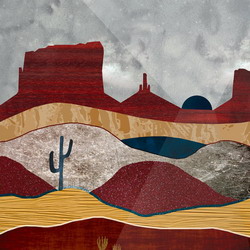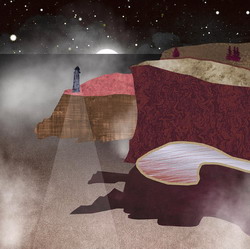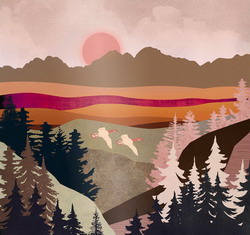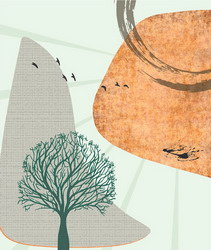The Most Financially Distressed Areas In America
I’ve been doing regular posts on financial topics from a geographic perspective. These selfishly serve my own interest since I’m a geographer by trade, but my main goal is to help those who may be considering geoarbitrage as a way to optimize their finances and their life overall.
Additionally, those who RV or live the vanlife can get good data and information about different areas of the country in regards to their finances.
To date I’ve covered topics like debt, car ownership, spending on public schools, and the affordability of houses. This post will be covering poverty.
The Economic Innovation Group publishes a very data-rich interactive map of what they call the “Distressed Communities Index”. If you’re not a mapping nerd like me and don’t wish to play around with the interactive version, this shot of the entire USA gives a look at what shouldn’t come as too much of a surprise:

In a nutshell, brown is bad and blue is good. The darker of each, the more extreme the respective condition. They use seven metrics to measure “a single holistic measure of community economic well-being” at the zip code, city, county, and congressional district levels.
The seven component metrics of the DCI are:
- No high school diploma: Percent of the population 25 years and older without a high school diploma or equivalent
- Housing vacancy rate: Percent of habitable housing that is unoccupied, excluding properties that are for seasonal, recreational, or occasional use
- Adults not working: Percent of the prime-age population (ages 25-64) not currently in work
- Poverty rate: Percent of the population living under the poverty line
- Median income ratio: A geography’s median income expressed as a percentage of its state’s median income
- Change in employment: Percent change in the number of jobs from 2011 to 2015
- Change in business establishments: Percent change in the number of business establishments from 2011 to 2015
As a data nerd I like some of the methodologies, especially #5 above. Simply measuring the median income of a county does not tell the full story.
A median income of say $57,000 in Connecticut on the surface looks average since the median income in America is around $59,000. But in Connecticut it’s well below average since Connecticut’s median income is around $75,000.
So the cost of living is no doubt much higher, and that $57k income is actually a much higher “distressed” income than it would be elsewhere.
Measuring Distress
There are two main measures of distress based on the seven indicators, and you can read about their methodology here. They list a “Distress Score”, and a “Distress Rank”.
Basically the Distress Score is a percentage of 1 – 100, the lower the number the better. The Distress Rank is where the area ranks of the 26,000 they ranked in America. Again, the lower the better.
I live outside of Washington D.C. and did a post about how the D.C. area is the richest in the country. And I grew up just 50 miles north in Baltimore which has some of the poorest and most downtrodden areas in the country. Well, their data looks accurate since it shows that dichotomy very clearly. Here’s the area.

Needless to say my move to DC was only 50 miles away but I basically hyper-transported from one universe to another.
Other noticeable trends on the US map are mostly expected, such as the large “brunch belt” of dark blue in the well-off Northeast, and the dark brown of the south.
The poor white areas of Appalachia are some of the worst in the country and are noticeable on the map.
I also noticed some unexpected areas of dark blue in North Dakota and Northeast Wyoming. I’m guessing they’re the result of the natural gas boom and the great paying jobs that came along with it.
Lastly, the suburbs of Minneapolis-St. Paul and southern Minnesota in general are very blue, and extend out way further than other big cities in America.
Food Insecurity
A related mapping site I found shows food insecurity in America by county.

Again, darker colors are bad and have a higher rating of food insecurity. Their methodology is complex and uses food prices, poverty rates, and even self-reporting of food budget shortfalls.
The Real America
The goal of this post wasn’t simply to be a Debbie-Downer by showing maps of the distribution of poverty. But that is indeed what stands out, at least to me.
We in the financial independence movement are more likely than not educated and relatively well-off. So it’s sometimes easy to forget how vast swaths of the country are financially distressed and suffer from food insecurity.
Even if they have access to food, in many poor areas it’s usually fast food, or chemically injected and processed/packaged poison. And their obesity rates and morbidity rates clearly show the results.
Like my other geo-data posts, I hope these resources can help you if you are considering a move or if you are living the nomadic lifestyle. Also be sure to check out my Geoarbitrage Resources Page that has tons of great tools to help you find your perfect location.










































Another eye opening post with great visuals AF. What is shocking to me was a previous post that highlighted the cost of the big 3 expenses where the south east did really well compared to rest of the US seems to be the main concentration of distress in today’s post.
That was not something I would have expected.
Very true, even though many areas in the South etc are cheap for the big three they’re still financially distressed. Great comment!
Man, I love the niche you are creating. I find this stuff fascinating.
Looks like I am living the right little tiny pocket in the south!
TPP
Glad you like these posts Doc, thanks for reading!
i’m guessing about a correlation between distress and crime while we decide where we might want to live. populations with crappy lives and no hope are more likely to knock you on the head to take your stuff or bust in your side window. now i gotta spend another couple of hours on that interactive map.
very true man, i wouldn’t say all distressed areas are high crime but i’m willing to guess the correlation is high. i need to find time to look for some good data on that. have fun with the maps!
Great maps. The interesting thing to me is food insecurity in Northern CA. We just drove through there and it’s a very neat area. It’s probably harder to find jobs in that area than the rest of CA. It’s quieter and more rural. I wonder why there aren’t more farms in that area. The forests there is really neat.
Northern CA is gorgeous!! I haven’t been in a while but I do know that there are some poorer towns, probably because the fallout from logging jobs gone by the wayside.
Now the hard part is digging into the reasons and the massive task of how to fix it. In a place like the US it is a shame that a graph of food insecurity is showing so many problems, I am sure not much better north of the border. Nobody should have to worry about food.
Very true, the wealthier half of our respective countries throw out almost half their food because they simply don’t want to finish dinner. Sad.
These mapping posts are fascinating to me, but no surprise given my background 😉 Zooming in at the granular level makes things look so different and really goes to show even within a specific county within a specific state, the “average” varies widely.
GIS nerds – unite!! Glad you enjoy!
That interactive map is a great link. I can’t help but notice that a few of the items on the list are things that the FIRE community tries to make as our exception toward freedom. Things like “adults not working”, “medium income ratio”, “change in employment” — it’s oddly ironic. And count us in with the RV crowd. I will have to keep a link to that map at the ready as we travel.
Great point Susan! But FIRE folks achieve FIRE first, and then start to look at work etc as exceptions to freedom. Sadly “adults not working” is a reality from the start in places like Baltimore where I grew up. Many can’t even read.
Very interesting maps – I wonder if a uk version exists…
I’m guessing somebody out there has the data or is working on it 🙂
I grew up and continue to live in an economically advantaged community. This post is a good reminder that other parts of the country don’t fair so we’ll.
I also find that traveling to economically downtrodden areas is a great eye opener too
It’s interesting to see that the distressed communities and regions of food insecurity occur in the bible belt deep South and the four corners. It likely seems to show how disadvantaged the Black community and Native American communities are.
Since I was a little kid, I always loved looking at maps and learning geography. Keep these types of posts coming!
Awesome to hear of another geography nerd – united we are strong and I will continue to do these posts!
These posts open up a lot – The averages that we see are deceiving us. It is usually easy to understand that not all areas are the same, but we typically think of whole states, or so. Not 50 miles making a difference like for you.
Very true. Sometimes I find data by county but sometimes only by state so depending on the aggregation level some topics can be deceiving. Glad you like them!
I am so glad that I stumbled across this page.
The pictures/infographics tell such a great story – although I am not sure I understand some of the subtleties (like the DC/Baltimore map).
For the UK, here is one for Scotland
https://jamestrimble.github.io/imdmaps/simd2016/
(note, I’m based in the UK)
Basically Baltimore and DC are polar opposites even though they’re close. Baltimore is a big blue-collar city with TONS of crime and DC is a big white-collar city with mostly rich and educated people and not too much crime. The crazy part is that they’re so close. Kind of like Edinburgh and Glasgow, but more extreme.
Thanks for the UK map link!
This is real valuable research, thanks for all the info. Do you have any posts on how the ongoing weather changes are affecting cost of living (mega storms, insurance costs, etc)? I often think of how different if any the weather and living conditions will be when I reach FI in 6-7 years.
I have no seen any data like that but it might be out there. Problem is we can’t seem to get the 3-day forecast right very often so I don’t know how accurate it would be
Spatial data is available everywhere (google search terms like GIS, spatial data, maps). Some UK shape files and data here: http://www.esriuk.com/arcgis-content/Basemaps
This assumes that you have access to and some experience with GIS software. There are many online mapping tools as well via most government websites (e.g., US, UK) allowing you to create maps with no GIS knowledge.
Yes, there is so much data but so little time to work with it 🙂